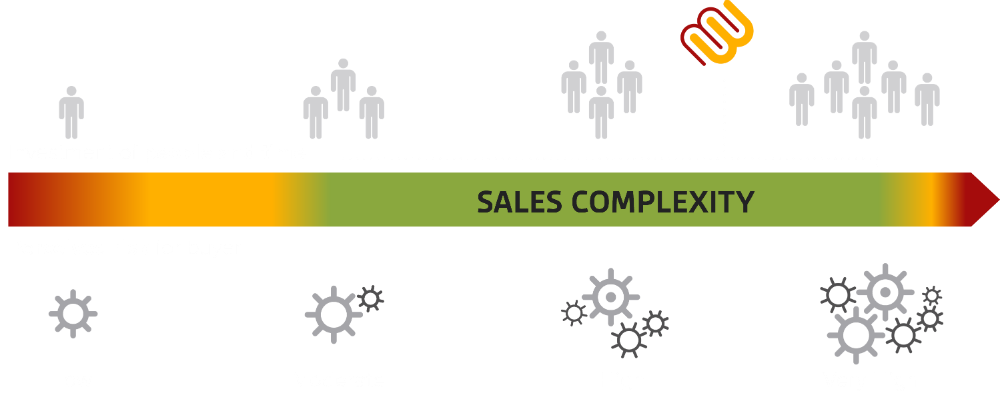
6 ways to improve your B2B win rates
If you're facing increased competition, multiple stakeholders in each buying decision, longer sales cycles and rising sales costs, you are not alone. Many sales organizations need to revise both their strategy and tactics; doing more of the same will not help them reach their targets. This blog post is intended to provide a simple framework for how to best plan our execution, when engaged in complex b2b sales.
1. Understand your buyer
In our eagerness to sell, we sometimes overlook that what really drives the level of sales complexity is the perceived risk and complexity of the buying decision.
When buyers are overloaded with information, more time-constrained than ever and struggle to get attention within their organization, sellers are struggling as a result.
For this reason, it’s paramount to better understand your buyers and organize your sales efforts accordingly. The more risks involved in the buying decision - financial, organizational and supplier - and the more people and time that will need to be invested in buying and implementing the solution/change, the more complex your efforts will become:

By truly understanding your customers, the challenges that they face and how you can be of assistance, the better you can help them facilitate their buying decision. This includes understanding their decision-making style and internal politics. Not an easy task, but very necessary, especially in more complex sales projects.
2 Define client-fit and qualify your prospects
By knowing who you can help and how they buy, you can specify criteria that help your sales team focus on the right type of prospects and customers. Another important, and often overlooked, suggestion is that you clearly define and separate the responsibilities between sales management and sales people. To keep it simple, let’s determine that:
1. Sales management defines lead criteria
2. Sales teams prospect
3. Management qualifies sales projects
4. Sales teams win sales projects
5. Management refines the business plan based on results
3. Co-create value in your sales process

Photo Credit: Ben Stassen
When your prospecting is on song and you earn the right to discuss their challenges and ambitions, your sales team needs to have the skills and structure to co-create value with prospects in a way that differentiates them from the competition. They also need the experience and coaching from management and continually qualify each opportunity to prioritize those with a higher chance of winning. A high-level opportunity management structure could look like this:
Discover
• Can we create value?
• Can we deliver with profit?
• Can we compete?
Mobilize
• Facilitate the buying decision process (why change? why now? all aboard?)
• Provide the sales person with resources required
• Customize your approach to maximize value
Deliver
• Determine criteria for successful delivery
• Hand over to operations
4. The right person in the right role
Sales people possess different strengths and weaknesses; subsequently, they will excel at different tasks. Make sure you organize your team to maximize everyone’s impact. Setting up a specific team to prospect is usually a good idea. For related reading, this article shines some light on the topic of what makes a good b2b sales person and here’s one about whether or not sales people should prospect.
5. Use technology to guide your efforts
No matter how ambitious your sales strategy, it will not make a difference unless it’s properly executed in daily operations. You will need to convert theory into practice by adapting sales effectiveness software. We’ve designed Membrain to provide you with all the tools needed to excel in the complex b2b sale.
6. Learn and improve
Over time, you will win and lose sales projects. Use the data available. Go through a regular win-loss analysis exercise with the team in order to continuously:
• improve your prospect qualification criteria.
• overcome competitor tactics.
• better navigate buying decisions.

By George Brontén
George is the founder & CEO of Membrain, the Sales Enablement CRM that makes it easy to execute your sales strategy. A life-long entrepreneur with 20 years of experience in the software space and a passion for sales and marketing. With the life motto "Don't settle for mainstream", he is always looking for new ways to achieve improved business results using innovative software, skills, and processes. George is also the author of the book Stop Killing Deals and the host of the Stop Killing Deals webinar and podcast series.
Find out more about George Brontén on LinkedIn








